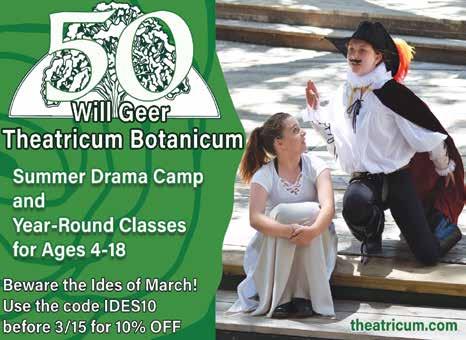
4 minute read
Celebrate and Discover Women’s History
Women’s History Month is an annual declared month that highlights the contributions of women to events in history and contemporary society. It is celebrated during March in the United States, the United Kingdom, and Australia, corresponding with International Women’s Day on March 8, and during October in Canada, corresponding with the celebration of Persons Day on October 18. The commemoration began in 1978 as “Women’s History Day” in Sonoma County, California, and was championed by Gerda Lerner and the National Women’s History Alliance to be recognized as a national week (1980) and then month (1987) in the United States, spreading internationally after that. (Wikipedia)
WAYS TO CELEBRATE
Advertisement
1. Explore the history of women’s rights. The theme of Women’s History Month 2023 is “Celebrating Women Who Tell Our Stories,” a theme that honors women in every community who have devoted their lives and talents to producing art and news, pursuing truth, and reflecting society decade after decade. If you don’t know the history of women’s rights, now’s a perfect time to learn!
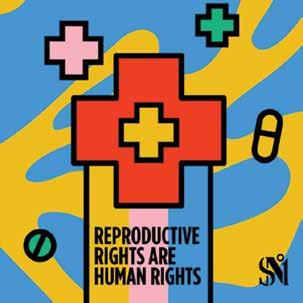
2. Be aware of issues women still face today . Although women have made progress, they still earn less on average than men, carry the majority of household and childcare responsibilities, face workplace stigmas and double standards, and are underrepresented in leadership, STEM careers, and politics. There’s domestic violence, sexual harassment, trafficking, and rape culture and hiring bias, harmful beauty standards, and the pink tax. ( yourdream.liveyourdream. org )
3. Post on social media to spread awareness of Women’s History Month. Find shareable content on our Facebook ; Instagram accounts.
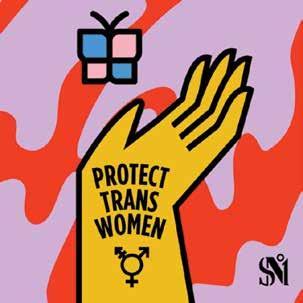
4. Support a woman’s nonprofit and women-owned businesses This is helping tens of thousands of women and girls across the globe achieve economic empowerment through education. (Soroptimist.org; LiveYourDream.org)
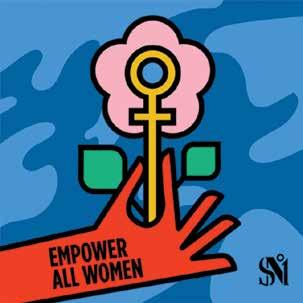
5. Watch TED talks for women Highly recommended. The TED website has a curated list of videos about and by women. (ted.com/topics/women)
By Karen Moran
Iwoke up one Saturday morning when I was five or six and decided to bake Criss-Cross Brown Sugar cookies for our neighbor Mrs. King. She’d always been so good to me, and I wanted to give her something.
I often spent bread-baking days with her in her kitchen. She’d always make me a small loaf with whole wheat flour since my parents didn’t allow me to eat white bread. She’d play the piano for me while the bread baked, and she’d teach me a note or two of the sheet music. And she always invited me to go to church with her on Sundays.
Mrs. King lived about a half-mile back from our cottage in Hondo Canyon. The road to her house was called “King’s Road,” even though it ran along the edge of our property, which ended at her bridge. She had an easement to travel the road, as it was the only way in or out of the box canyon. (Today, hikers who park on Old Canyon Road just past Topanga Christian Fellowship church skirt around lower Hondo Canyon on their way up to the Backbone Trail.)
I loved to get up early and bake. It made our little kitchen warm and made our whole cottage smell good. I was good at measuring and able to read recipes. And I loved putting the little criss-cross on the cookies with a fork while they were still warm. As the cookies cooled, I set them on wax paper and a plate. Then I had Mom call Mrs. King and tell her I was on the way.
Off I went down the back path to King’s Road, carefully balancing the plate with both hands. On the way, I tripped over a dip in the road. All the cookies slipped off the plate onto the ground. I was mortified—how could I arrive at Mrs. King’s without a gift?
I turned around and ran home.
•••
Other neighbors crossed our land, on foot and horseback. A small riding trail crossed our meadow and led to Old Solomon’s Road, a dirt track that ran parallel to Old Canyon all the way to the church. There weren’t any easements or fences at the time, and that was just fine with my parents and Mr. Solomon.
As my father put a roof on the cabin and further developed our property in Hondo Canyon, fewer picnics took place on the forty acres we owned at the top of Red Rock Road. Once in a while, I’d hike up with a friend or two to share the beauty. Mr. Stunt had given my father a handshake easement to cross his property, so I was never concerned about trespassing. Private property ownership had been established in the Canyon, but good will and good neighbors governed. We all felt a strong sense of personal responsibility to the land, the natural world, and its preservation.
By the time I left home in 1965, my father’s dream of building a home at the top of Red Rock had died away. He was too busy with the home in Hondo Canyon, four teenage daughters, and the family business.
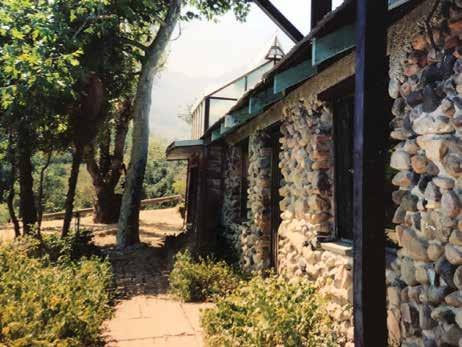

And then, in the early 1970s, the State of California came knocking at the door of our family cabin. I’d just returned home with my two young children to discover that the government wanted Hondo Canyon—all of it— to provide the gateway to a future state park. They couldn’t figure out any access to the mountains and meadows above Old Canyon other than our property and the Kings’, which was now owned by Mrs. King’s son, Orson, and her grandchildren.
The State wanted to claim it all for a thoroughfare, possibly a highway, and even considered making Hondo Canyon a landfill dump. They threatened to take it by eminent domain. I had already been hearing that families were losing their ranches to public use. Paul Bragg, who owned the 80 acres between our cottage and the Topanga Meadows—including Mr. Post’s cabin—tried to hold out. But he was told he could either sell or be thrown out. The State had that power.
The King family warded off the government by giving them the land in upper Hondo Canyon piecemeal. After long, pressured negotiations,










